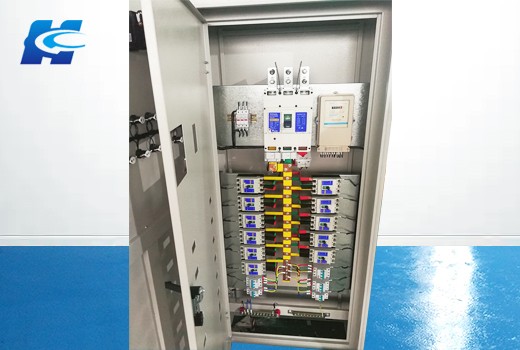Company news
Installation requirements for distribution cabinets
Main types of switch cabinetsLow-voltage switchgear includes GGD, GCK, GCS, MNS, XLL2 low-voltage distribution boxes and XGM low-voltage lighting boxes.
Main differences:
GGD is a fixed type, while GCK, GCS and MNS are drawer cabinets. The drawer pushing mechanisms of GCK cabinets are different from those of GCS and MNS cabinets.
The main difference between GCS and MNS cabinets is that GCS cabinets can only be used as single-sided operation cabinets with a depth of 800mm, while MNS cabinets can be used as double-sided operation cabinets with a depth of 1000mm.

Withdrawable cabinets (GCK, GCS, MNS) take up less space, are easy to maintain, and have more outgoing lines, but they are more expensive.
Fixed cabinets (GGD) have relatively fewer outgoing circuit lines and take up more space (if the space is small and a fixed cabinet cannot be installed, it is recommended to use a drawer cabinet instead).
Installation requirements for distribution boards (boxes)
Distribution boards (boxes) should be made of non-combustible materials. In production sites and offices with a low risk of electric shock, open-type distribution boards can be installed. In places with high risks of electric shock or poor working environments such as processing workshops, foundries, forgings, heat treatment rooms, boiler rooms, and woodworking workshops, closed cabinets should be installed. In hazardous operation sites with conductive dust or flammable and explosive gases, enclosed or explosion-proof electrical facilities must be installed. All electrical components, instruments, switches and circuits on the distribution board (box) should be neatly arranged, firmly installed and easy to operate. The bottom surface of the floor-mounted board (box) should be 5 to 10 mm above the ground. The center height of the operating handle is generally 1.2 to 1.5 meters. There are no obstacles within a range of 0.8 to 1.2 meters in front of the board (box). The protective wire is reliably connected. No bare live parts shall be exposed outside the board (box). Electrical components that must be installed on the outer surface of the board (box) or on the distribution board must have reliable shielding.
RELATED NEWS
CATEGORIES
LATEST NEWS
CONTACT US
Name:
Mobile:13861751023
Tel:86-0510-81020919
Email:rdh518@huikongkeji.com
Add:No. 217, Xitai Road, Meicun Industrial Park, New District, Wuxi City, Jiangsu Province
